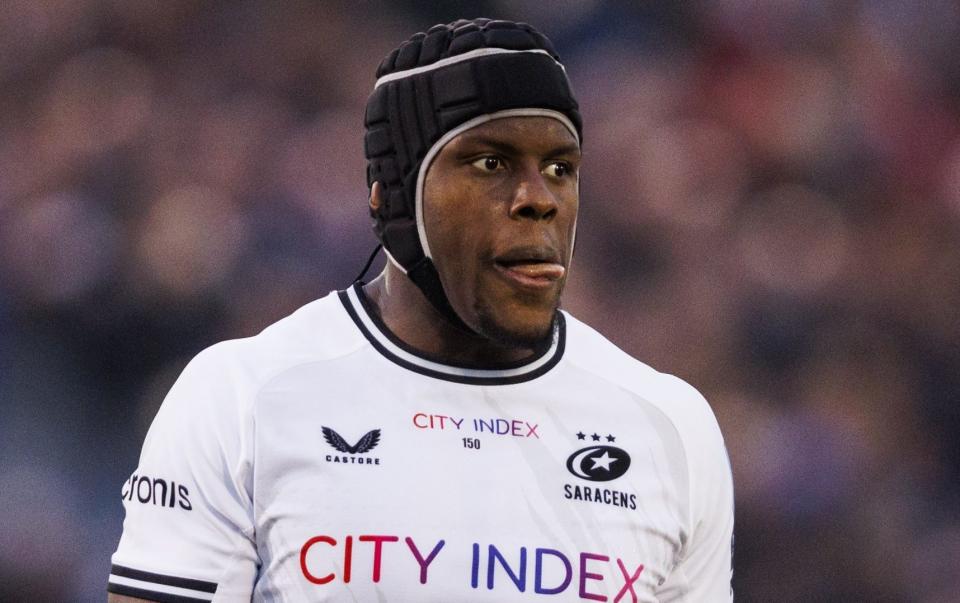Maro Itoje free to play in Saracens’ run-in after escaping ban for dangerous tackle

Maro Itoje has been cleared of making a dangerous tackle against Bath and is free to play in Saracens’ Premiership run-in.
The news will be a major boost for Saracens ahead of the end of the regular season and potentially the play-offs, with the club currently in second place but still requiring points from their final two league matches away at Bristol and at home to Sale to secure their spot in the semi-finals.
Itoje was shown a yellow card for a tackle on Bath’s Alfie Barbeary in the 29th minute of Saracens’ win at The Recreation Ground last Friday. The incident was reviewed extensively by referee Luke Pearce and the television match official David Rose, examining normal speed and slow-motion replays.
Itoje was subsequently cited for dangerous tackling, contrary to World Rugby Law 9.13, by the match’s citing commissioner.
After appearing before a disciplinary panel on Tuesday the panel’s chair, Philip Evans KC, disagreed with the citing commissioner’s assessment that there was “a high degree of danger”, noting that a particular angle from a rear view had shown the contact appeared to be chest-on-chest before there was “glancing” contact with Barbeary’s head.
Predict that this is the angle that Saracens will highlight in their defence of Maro Itoje. Looks like most of impact is chest-on-chest, with tackler's head either glancing carrier's head or missing entirely: pic.twitter.com/ru4TbyYTzr
— Charlie Morgan (@CharlieFelix) April 30, 2024
Owen Farrell, the Saracens captain, was overheard insisting to Pearce at the time that the impact was chest-on-chest. Bath’s head coach, Johann van Graan, said after the match “what I saw was head-on-head”.
The verdict read: “The panel heard and considered evidence from Maro Itoje and the Bath player and were able to examine the footage of the incident many times and from many different angles. In particular, the panel watched the footage from the rear view of Itoje which, when considered alongside the rest of the footage, demonstrated it was more likely than not that contact was not initially with the head or simultaneously with the head and the body. Instead, contact with the head appears to come later and can properly be described as more glancing than direct in nature.
“In all of the circumstances, the panel did not conclude that a high degree of danger was created and therefore the on-field decision stands. The player is free to play with immediate effect.”

 Yahoo Sport
Yahoo Sport 





































